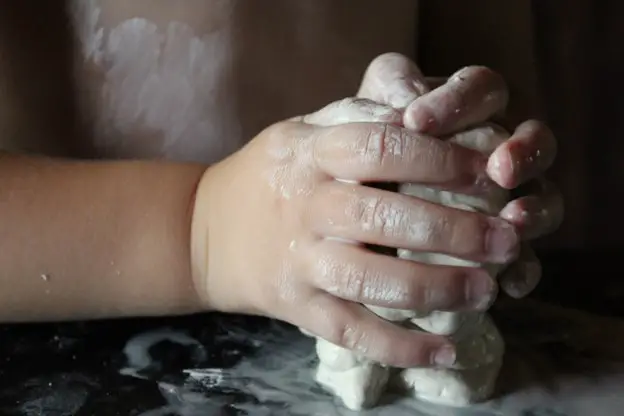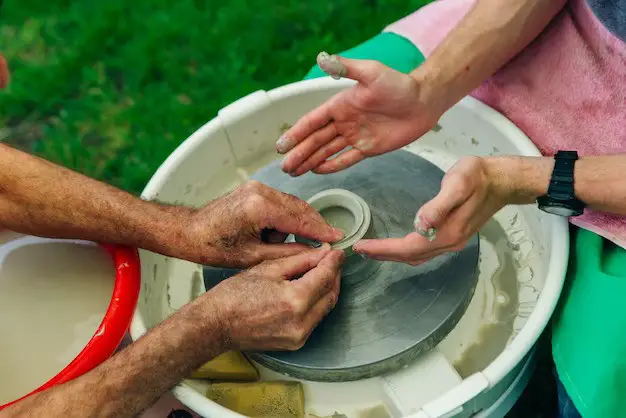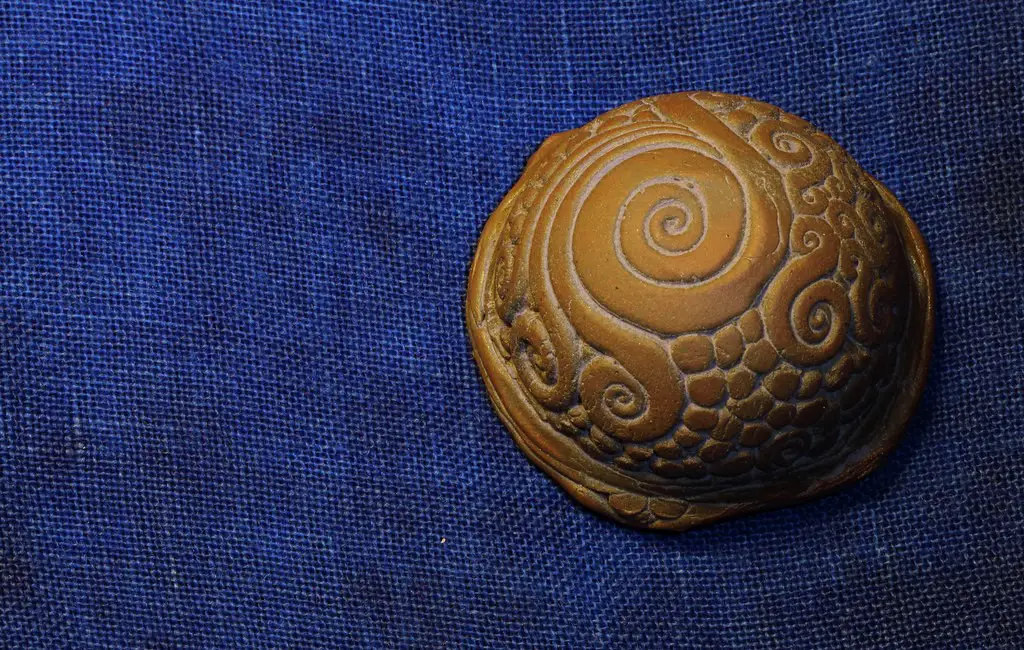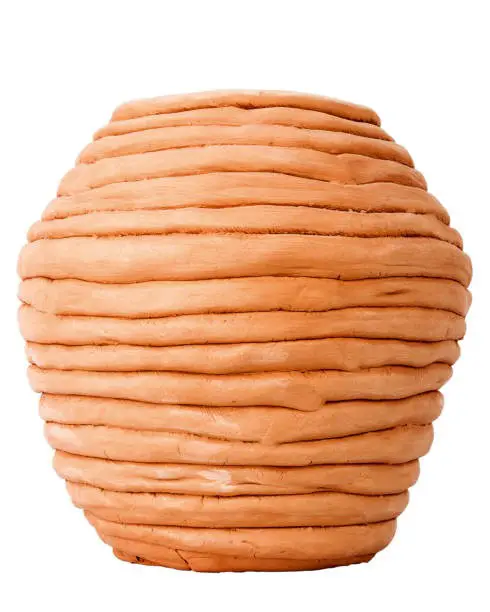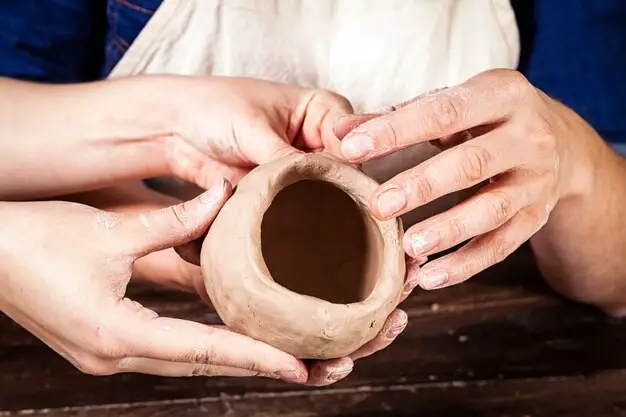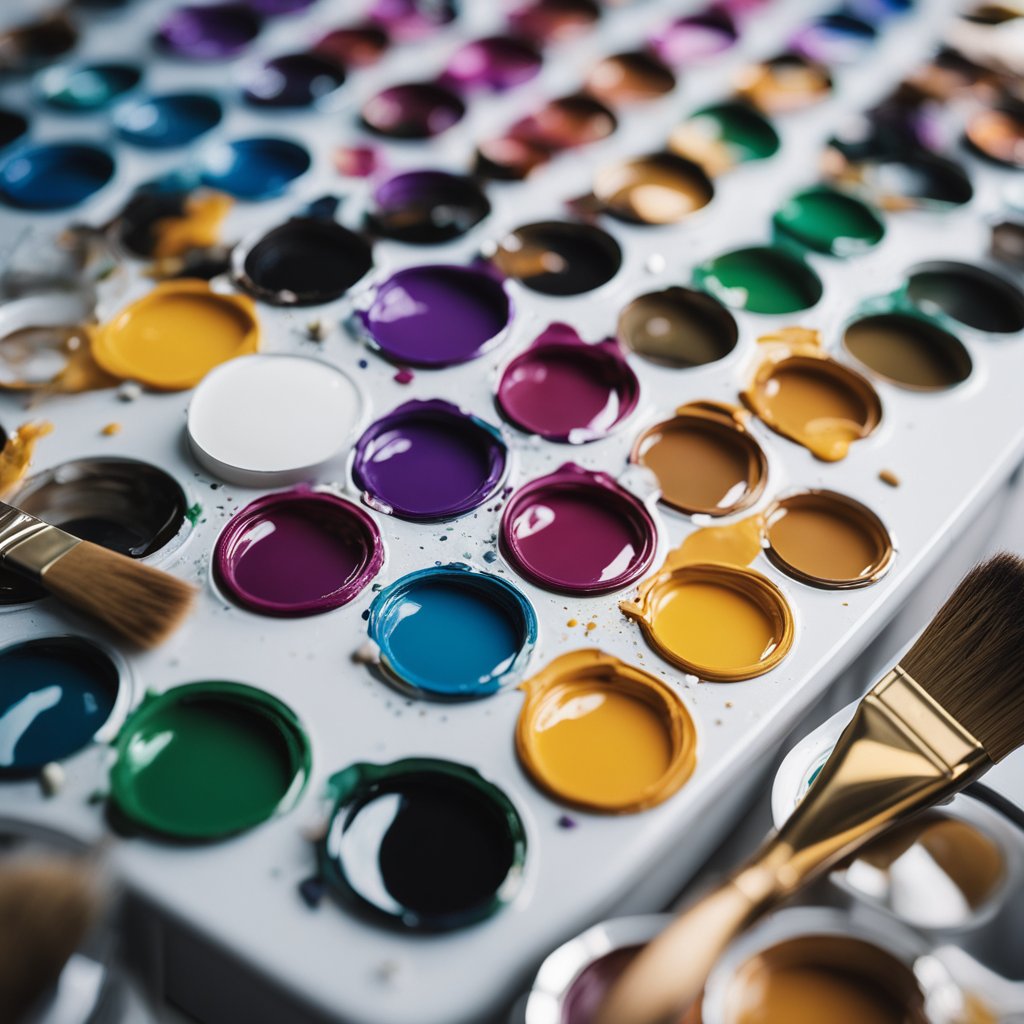Clay is a kind of fine-grained clay that, when moistened, may be shaped into a wide variety of different forms. There is a chance that different quantities of sand, minerals, tiny rocks, and other naturally occurring components of soil may be discovered here. Clay may have a broad variety of distinct textures and colors, all of which are influenced by the particle size of the clay and the composition of the clay. Clay can also have a variety of different shapes. Clays that have very high concentrations of iron oxide tend to have an appearance that is rusty, red, or orange, while the appearance of clays that contain no iron at all is often gray or even white. This latter group includes the clay used to make porcelain.
Clay is employed in a wide variety of business sectors and may be put to use in an unlimited number of diverse ways. Industrial clay, for example, is put to considerable use in the building industry for the manufacturing of bricks, walls, and pipelines. In addition, industrial clay is capable of being used in the modeling and design of a variety of different things in three dimensions. On the other hand, the only kind of clay that will be covered in this article is the one that is used in the production of pottery.
There are a huge number of diverse types of ceramic clay, and each one has one-of-a-kind characteristics that confer either a higher or lower degree of application onto it depending on the activity that is being carried out. When looking for pottery clay, there are a few qualities that are essential for you to take into consideration:
Shrinkage:
Clay shrinks as it dries, and the final objects will have a smaller footprint after they have gone through the firing process. Depending on the kind of clay that was used, the percentage of shrinkage might fall anywhere between the range of 5 to 15%.
Absorption:
The amount of water that a burnt item absorbs, stated as a ratio to its weight, is referred to as its absorption percentage. It might be anything from 0% to 15% of the total amount.
Temperature range or firing temperature: The lowest temperature at which a product must be fired to reach complete maturity. Both the temperatures at which the pieces must be burnt and the time for which they must be burned at those temperatures are factors that rely on the kind of clay as well as the size or thickness of the piece.
Plasticity:
Clay is much easier to pull, shape, and work with when it is wet than when it is dry. The degree to which clay’s plasticity is raised is directly proportional to the degree to which its flexibility and workability are improved.
Grog:
A kind of crushed, burned clay formerly used to create pottery is referred to as a grog. It may be obtained in several different particle sizes, and it is often used with clay to bestow an unusual texture onto the material and to reduce the amount of shrinkage that the final product is subjected to. You may either get clay and grog separately and then mix them at home, or you can get clay that already has grog mixed into it. Both options are available to you.
Various types of clay are used for making pottery.
Stoneware, earthenware, & porcelain clay are the three varieties of clay that are used in the production of pottery the most often. They are all put to different uses, and as a consequence, each one of them has a different collection of attributes and characteristics.
Earthenware clay
The clay that is used to manufacture earthenware is often thicker, heavier, and more brittle than the clay that is used to make stoneware. Terracotta is the most common kind; it is distinguished by a rich red tint and is most often used for the creation of tiles and flower pots. Terracotta may be found in a variety of shapes and sizes.
Earthenware clay is regarded to be a kind of low-fire clay since it only has to be burned at a temperature of around 1100 °C (2000 °F). The fact that the finished products made from this kind of clay are naturally porous means that they are unable to hold any liquids; if you want them to be permeable, you will need to glaze them and fire them for a second time. This second step requires more time and money, none of which are appropriate for those who are just getting started.
Stoneware Clay
Stoneware clay is the sort that offers the greatest degree of versatility in terms of how it may be worked with. If you are a beginner who is trying to produce pottery for the very first time at home, it is recommended that you acquire stoneware clay as kind of clay that you should use. It comes in a wide variety of colors, ranging from white to a nearly black dark brown. Stoneware pottery, once fired, is highly long-lasting, strong, and non-porous; this means that it will be capable of keeping liquid without the need to glaze it. Stoneware pottery may be found in many countries across the world.
During the firing process, it can endure temperatures ranging from 1100 to 1300 degrees Celsius (2000 to 2370 degrees Fahrenheit), and it may be fired many times.
Stoneware clay may be used effectively to shape a broad variety of objects, ranging in size from little plates to giant vases. You may manufacture items with clay by using a pottery wheel to throw them, or you can use it for hand-building techniques, which include shaping the clay by hand.
Porcelain clay
Porcelain clay is renowned for being one of the most difficult forms of clay to sculpt, although it is more soft and malleable than the other varieties of clay. It requires a lot of water, which must be added to the mixture strategically while it is being molded; if you do not add enough water, it dries out quickly, and if you add too much water, it may easily lose its form and collapse. If you do not add enough water, it dries out quickly. Because it takes a lot of time and expertise to learn how to work with porcelain clay, it is conceivable that it is not the best option for individuals who want to try their hand at manufacturing pottery at home for the very first time.
The temperatures on this list that must be reached to fire porcelain clay are the maximum possible temperatures. They range from 1,200 to 1,400 degrees Celsius (2,200 to 2,550 degrees Fahrenheit). It is quite unlikely that temperatures of this magnitude could ever be achieved without the use of a kiln.
The look of ceramics made of porcelain is of the highest caliber. It is highly recommended that you postpone giving it a go until you have accumulated a little bit more experience under your belt first.
Which kind of clay works best when used in the operation of pottery wheels? Clay of any sort, whether it is stoneware, earthenware, or porcelain, may be used successfully on pottery wheels. Even while some of them may be formed more easily than others, it is still possible to throw wheels using any of them. We have gone over this before, but certain materials are simpler to work with than others.
How to make pottery clay
It is possible to make your ceramic clay at home using a rather simple method. Several distinct methods may be used to treat clay, with the “wet technique” being the one that is both the easiest to understand and the one that is used the most commonly.
The wet technique of manufacturing pottery clay from dirt or soil includes combining earth and water in a big container, then letting the mixture rest for a few minutes to enable gravity to take the larger pebbles and sand to the bottom of the container, leaving just the water combined with clay on top of the container. The term “dry method” may also be used to refer to this process. After that, the water is passed through a fine cloth to remove impurities, and what is left behind is nothing more than wet, smooth clay that may either be used immediately or saved for use at a later time.
Where can I get clay so that I may start making pottery?
Clay may be purchased for use in pottery from several different retailers, the one you choose depending on the quantity of clay and the kind of clay you need.
If you want to buy them in small quantities so that you may make pottery as a pastime in your own home, you can find them at most stores that sell art supplies or you can buy them online from various service providers.
If you are interested in purchasing ceramic clay of a specific kind or if you want to purchase more than 20 pounds of it, we suggest that you purchase it directly from a local source rather than purchasing it online because it will be less expensive for you to do so. If you are interested in purchasing ceramic clay of a particular kind, you can find more information about it here. In addition, if you go to a local source, you will receive all of the support that you could want to get the perfect sort of clay for your projects. This is something that you can only obtain if you go to the provider in person. The vast majority of suppliers make their clay; thus, shopping from them will also help support a local business.
- The proper procedure for letting pottery clay dry out
- Kilns are necessary for the drying process of ceramic clay.
- Kilns are a particular kind of oven that is used for burning clay and melting glass. Kilns may also be used for other purposes.
- Kilns may be fueled by either gas or electricity, depending on the user’s preference.
Kilns that are powered by gas may use either natural gas or propane as their fuel source. They provide an earthy and aged aspect to ceramics as well as a darker tint to the finished product. Kilns that are powered by electricity are far easier to install and operate than kilns that are fueled by gas. They get their heat from “heating elements,” which are essentially just bits of wire that are constructed to resist the flow of electricity in the same way that the vast majority of other types of heating equipment do. In this way, they are similar to the majority of other types of heating equipment.
Electric kilns are without a doubt the best option for everybody, regardless of their level of experience, including beginners as well as seasoned professionals. They are offered for sale in a broad variety of sizes, and the prices at which they are sold are low enough that everybody may buy them.
When it comes to electric kilns, Soul Ceramics has a wealth of information to offer its customers. Regarding them, we have a wealth of knowledge! If you are interested in looking through our catalog, you can do so by going to the page on our website that is devoted to electric kilns. The following is a detailed guide that will give you all of the information you need to know about kilns and the process of firing pottery. If you are interested in learning more about kilns and the process, the following will supply you with all you need to know about the topic.
Is it possible to bake pottery clay in the oven?
It is not feasible to fire pottery clay in a standard kitchen oven for the simple reason that such an oven is not capable of achieving the very high temperatures that are necessary to fire the clay (at least 1100 °C or 2000 °F).
You can always pit fire clay at home if you do not want to spend the money on a kiln; however, it is a laborious process to set up, and it is much more challenging to get the temperature just right for the various types of clay you are working with. If you do not want to spend the money on a kiln, you can always pit fire clay at home. If the temperature is too high, the clay will become useless; nevertheless, if it is not hot enough, it will not dry in the right manner. As a consequence of this, if you wish to properly fire pottery, you will need to invest in a kiln.

